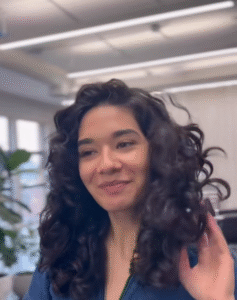Hair is often described as a crown, yet when it feels damaged, frizzy, or lifeless, it rarely feels regal. For many people, years of flat ironing, bleaching, tight hairstyles, or harsh products leave strands weak and dull. Each glance in the mirror becomes a reminder of what was lost. But the truth is simple—hair can heal.
A true transformation doesn’t come from shortcuts or miracle products. It begins with a choice: the decision to stop punishing hair and start nurturing it. That moment of change sets the stage for a journey of renewal, one that restores not only the strands themselves but also confidence and self-worth.
The first step is cleansing with kindness. Harsh shampoos packed with sulfates strip away natural oils, leaving hair vulnerable. Gentle, sulfate-free cleansers preserve balance, washing away buildup without robbing the scalp of what it needs. Conditioners rich in proteins and vitamins strengthen strands, while weekly deep masks provide the hydration that damaged hair craves. Slowly, texture improves, and strands begin to feel alive again.
The second step is protection. For years, hair endured the constant assault of blow dryers, irons, and harsh styling. Now, it is shielded instead of scorched. Heat tools are used sparingly, always with protectant sprays, and often replaced by air drying. Silk pillowcases prevent friction at night, while wide-tooth combs and gentle detangling reduce unnecessary breakage. These small changes create long-term results, allowing hair to recover in peace.
Styling also takes on a new meaning during transformation. Instead of trying to mimic unrealistic beauty standards, people begin to celebrate their natural textures. Straight strands regain their smooth elegance. Waves shine with softness. Curls bounce with energy, and coils stand bold and strong. For the first time, hair is not hidden or forced—it is embraced.
The emotional impact of this transformation cannot be overstated. People who once dreaded their reflection begin to smile at progress. Where frizz once dominated, smoothness appears. Where thinning patches caused worry, new growth brings hope. Compliments shift from focusing on drastic styling to genuine admiration of health and shine. The confidence that grows alongside healthier hair is undeniable.
Social media has amplified this wave of transformation. Platforms are full of people sharing their hair journeys, from damaged beginnings to vibrant recoveries. The before-and-after photos don’t just show the change in shine and thickness—they capture brighter eyes, bigger smiles, and the kind of pride that only comes from self-love.
This is why a hair transformation is more than cosmetic. It is symbolic. It’s about reclaiming identity from years of external pressure to look a certain way. It’s about realizing that beauty doesn’t require pain or punishment, but patience and care. Every healthy strand that returns is proof of resilience, a visible reminder of what’s possible when we choose healing.
Ultimately, hair is more than style—it is self-expression. When nourished, it becomes a crown not of weight or shame, but of strength, beauty, and pride. A crown that reflects resilience. A crown that says healing is possible. And a crown that belongs to everyone who dares to begin the journey of transformation.


